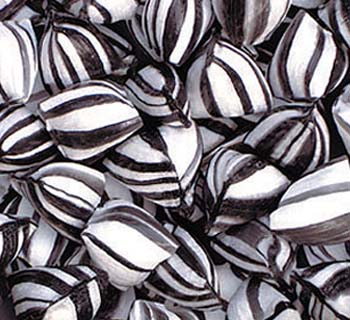People

Death by Humbug
In People
Bookmark
Record learning outcomes
In the middle of the 19th century, a score of children died and many more were made ill after eating sweets bought in a market. Steve Ainsworth looks into the incident and explains how it led to seminal pharmacy legislation
The customers who bought peppermint humbugs at Bradford’s Green Market in 1858 expected to enjoy their purchases. What happened next was not enjoyable at all. Within the next week, 20 children were dead and 200 more were seriously ill. It didn’t take long to discover the common factor: the same sweet stall on the market.
Due to a terrible mistake, arsenic trioxide had been added to the sweet recipe instead of a harmless sugar substitute. The poisonings led to the introduction of legislation controlling the adulteration of food. They also shone a sorry light on ‘health and safety’ procedures in Victorian pharmacies – deficiencies that would eventually lead to the Pharmacy Act.
William Hardacre, known as ‘Humbug Willie’, ran the stall in Green Market. Hardacre bought his sweets from Joseph Neal, a manufacturer of cheap confectionary based in Stone Street. Due to the high import taxes on sugar, humbugs were expensive to make. The answer was to bulk them out with plaster of Paris, or gypsum, enabling them to be sold more cheaply.
A ‘daft’ mistake
On October 18, Joseph Neal’s assistant, John Archer, was sent off to the premises of pharmacist Charles Hodgson in the nearby town of Shipley for a supply of gypsum, then known locally as ‘daft.’ When Archer arrived in Shipley, the chemist Charles Hodgson was ill in bed. Hodgson’s assistant William Goddard, however, went upstairs to consult with him before selling Archer 12 pounds of ‘daft’. Two days later, at Joseph Neal’s factory, 40 pounds of peppermint mixture was prepared by one James Appleton, with all the ‘daft’ included.
Later that same day Appleton felt ill and spent the next few days in bed; he thought he had a cold. Meanwhile, Neal delivered the sweets to ‘Humbug Willie’ Hardacre’s stall. Willie pointed out that the sweets were a funny colour; Neal claimed it was down to a new sort of gum, and offered Willie a halfpenny discount on the usual wholesale price. A true Yorkshireman, Hardacre recognised a good deal when he saw one and accepted the discount with alacrity. That same afternoon Hardacre had to leave his stall after feeling unwell.
"Arsenic trioxide had been added to the sweet recipe instead of a harmless sugar substitute"
Others were far worse than merely unwell. The following morning, tragedy struck a house in Jowett Street, off Brick Lane. It was the home of Mark Burran, who that morning had given his five year- old son, Orlando, and his baby, John, sweets bought from Hardacre’s stall. Both boys were seriously ill. By early evening they were dead, and local surgeon Dr John Bell suspected poisoning.
Throughout that day, police received reports from all over the city of people being taken seriously ill, and even dying. Doctors passed on their suspicions of poisoning to Felix Rimmington, the city’s leading chemist.
The evidence quickly pointed to William Hardacre’s peppermint humbugs.
Chemist and druggist Felix Rimmington later estimated that each lozenge contained between 11 and 16 grains (0.713g and 1.037g) of arsenic. A contemporary account suggested that 9 grains (0.5831g), with 4.5 grains (0.292g) was a lethal dose. As such, each lozenge would have contained enough arsenic to kill two people, and enough had been sold to Hardacre to kill 2,000.
At Hardacre’s home, police found him seriously ill. They recovered the remainder of his stock and sent a sample to Felix Rimmington. In the meantime, the confectioner Joseph Neal told the police, now following the trail of evidence, that he suspected that the ‘daft’ was possibly the source of the problem. In nearby Shipley, chemist’s assistant William Goddard was soon being questioned; he showed police the cask from which he had taken the ‘daft’.
Mint mystery resolved
It was now that Goddard’s employer, the pharmacist Charles Hodgson, pointed out that the cask contained arsenic. Somehow Goddard had mistakenly taken what he thought was ‘daft’ from the wrong cask, never noticing the ‘Poison’ label on it. As a consequence, over a quarter of each peppermint humbug was arsenic!
Although the authorities did their best to inform the public of the danger, plastering the city with warning posters, the damage was already done. By the next day, 12 people were already dead and 100 were seriously ill. Most of the victims were children.
Chemist Charles Hodgson, his assistant William Goddard, and sweet-maker Joseph Neal were all charged with manslaughter. Surprisingly, the deaths were eventually put down to accidental negligence, and the charges against the three were dropped. Nor could the three even be charged with adulterating foodstuffs. A Bill to make the adulteration of food a criminal offence had been rejected by Parliament the previous year. The Bradford tragedy did finally lead to the Adulteration of Food Bill in 1859, and to the passing of further legislation in 1860.
The poisoning, and resulting public uproar, was also a major contributing factor to the Pharmacy Act 1868, which recognised the chemist and druggist as the custodian and seller of named poisons and introduced the statutory requirement to keep written records.
Ironically, the Arsenic Act of 1851 already required a record of arsenic sales to be kept – but that was of neither comfort nor use to Bradford’s dead.

